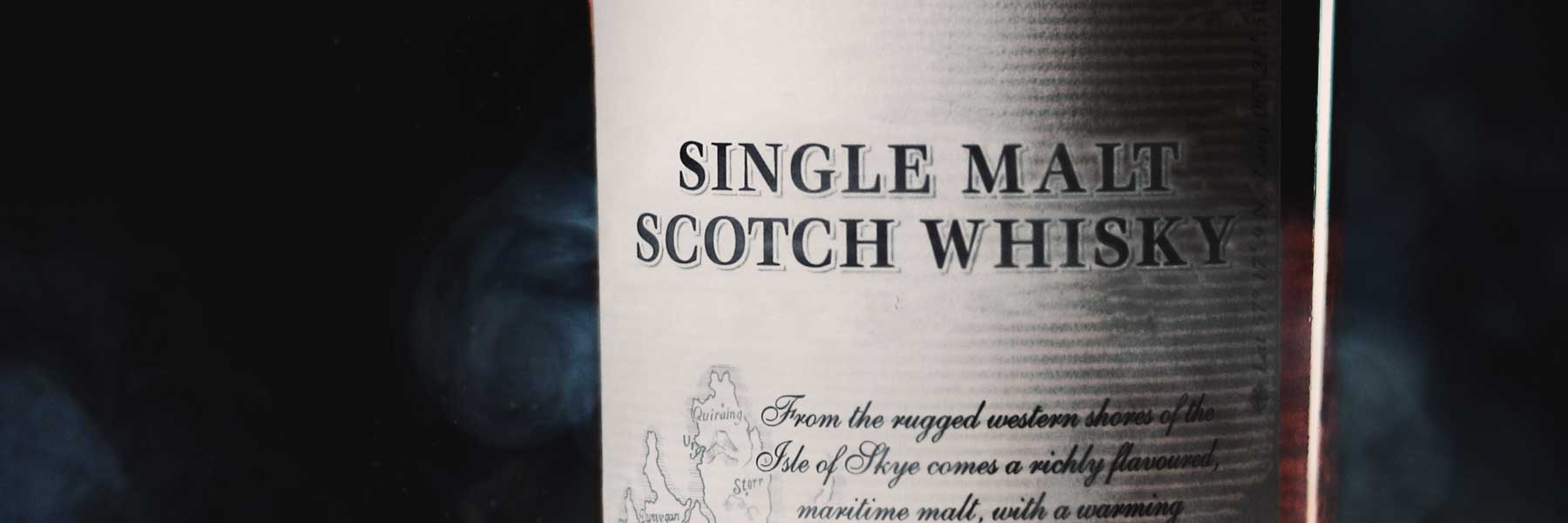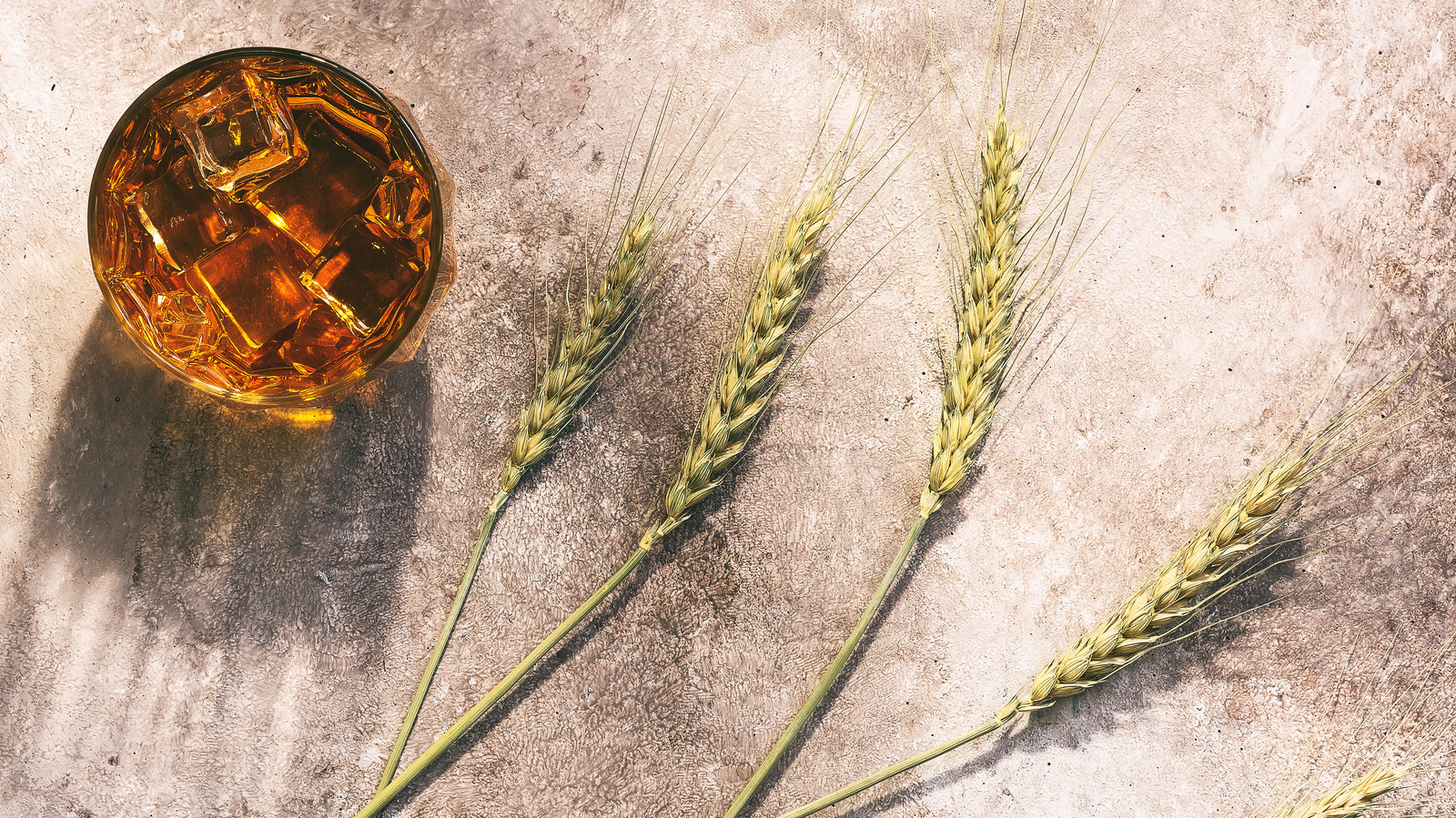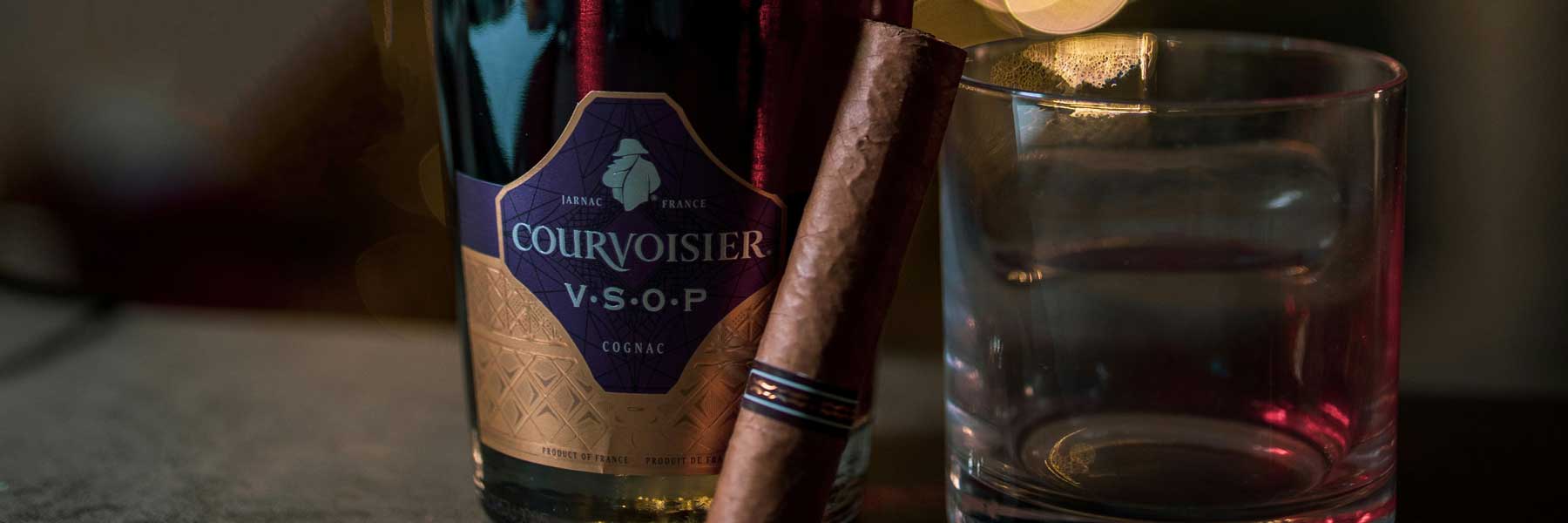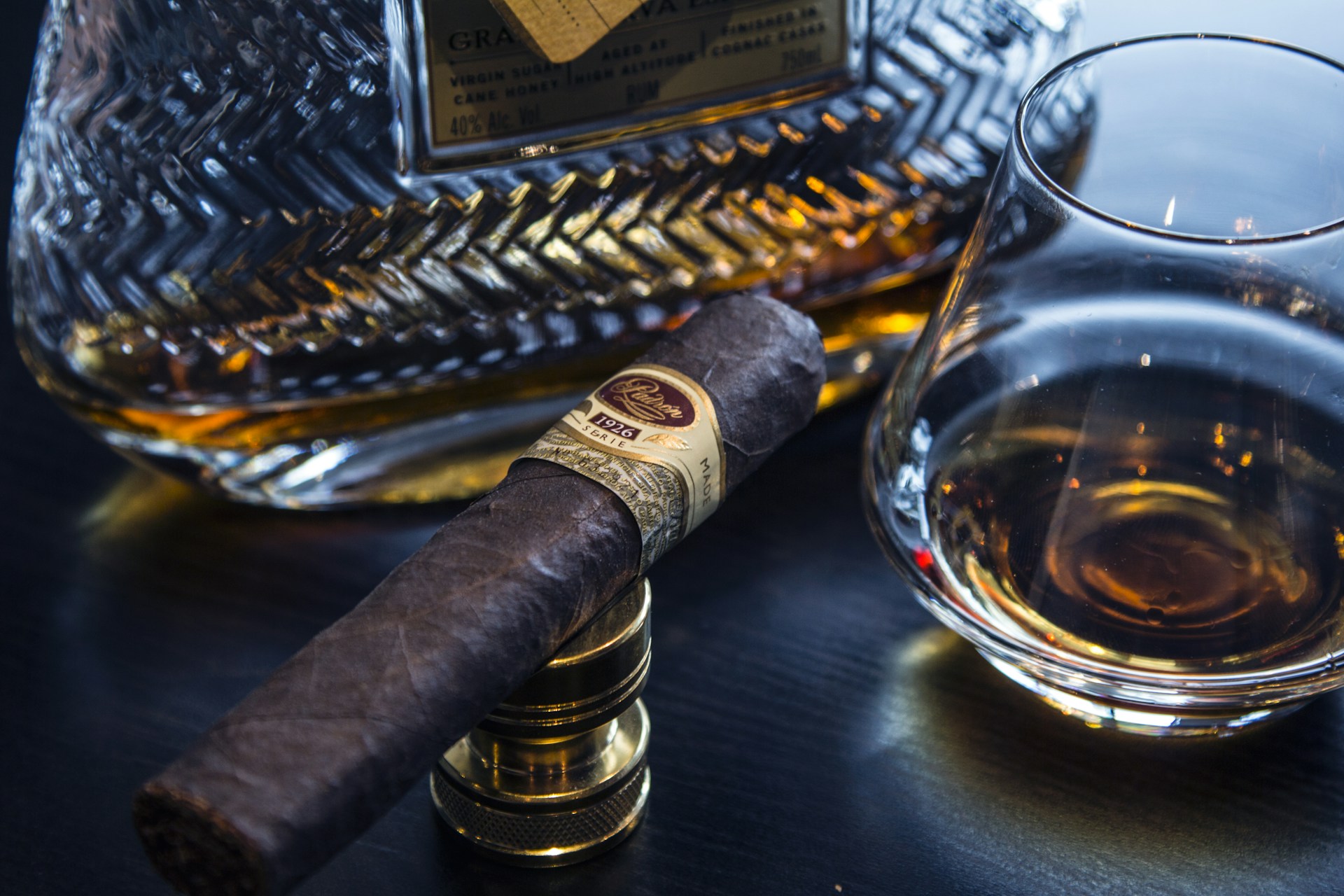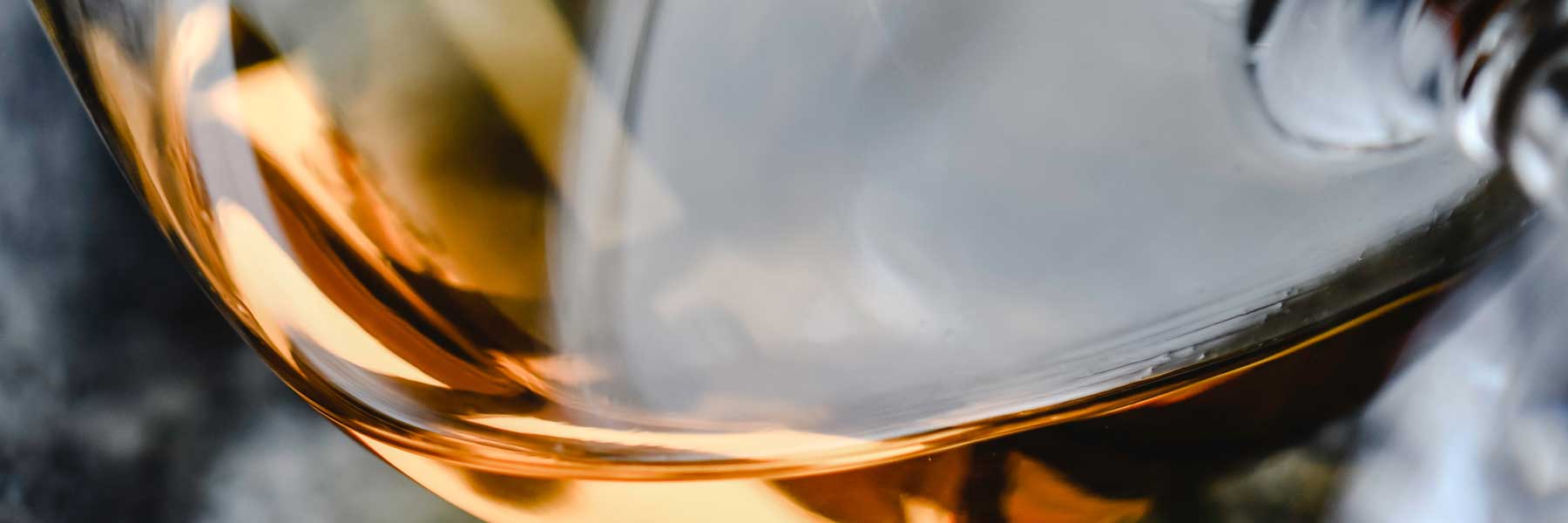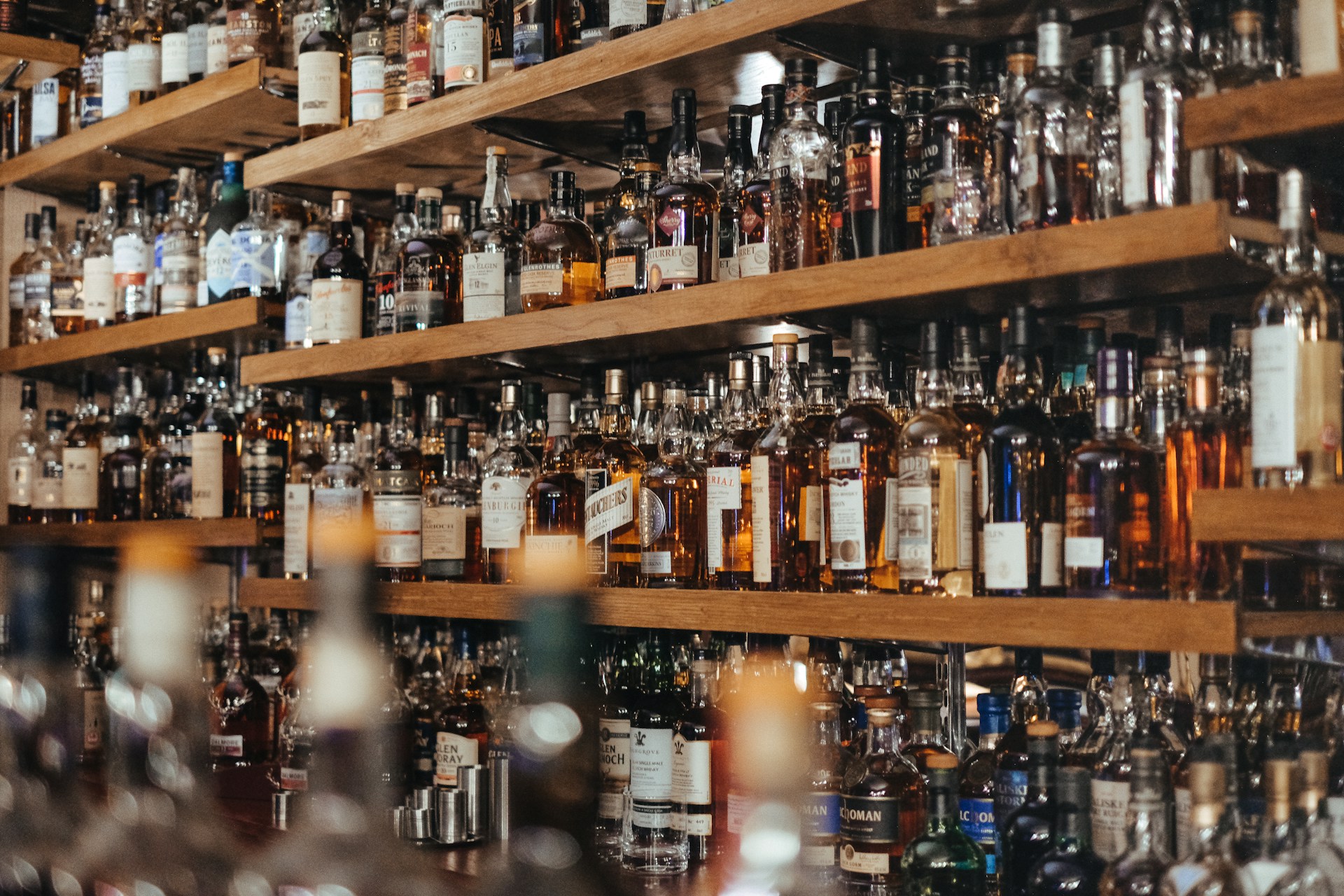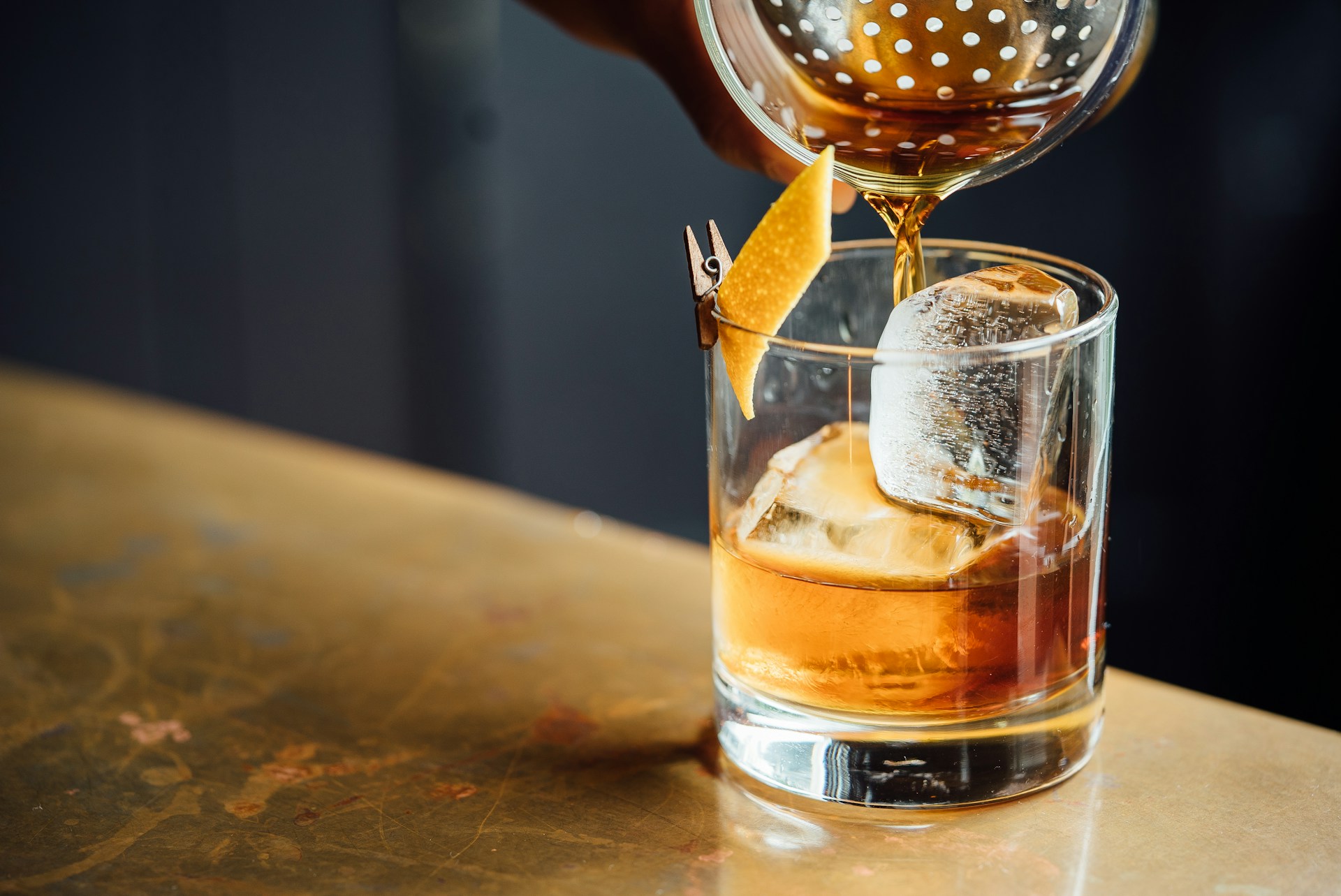What is single malt whisky?
Last updated on August 13th, 2024
Whisky which has been made by a single Scottish distillery using a fermented mash of 100% malted barely, water and yeast. As determined by the Scottish government, the whisky must be distilled using traditional pot stills and be aged for at least three years in oak barrels not exceeding 700 litres in capacity.
Single malt whisky is most commonly associated with Scotch, however this classification of single malt whisky (or whiskey) can actually be made in any country.
To get a better understanding, let’s take a closer look at what is single malt whisky and how it differs from other types of whisky and whisk(e)y.
What defines a single malt whisky?
- Single = from one distillery only
- Malt = made from 100% malted barley
- Whisky is mainly Scottish, Canadian or Japanese
- Whisk(e)y is mainly Irish or American
Single malt whisky or whiskey can be made in any of these countries, but can only be defined as single malt scotch if it was made in Scotland. For an accurate technical description, see the requirements for single malt Scotch below.
What are the requirements for single malt scotch?
First and foremost, single malt scotch must be made in Scotland. The whisky must be made using only water, yeast and malted barley as it’s primary cereal grain and be distilled using traditional pot stills. To become single malt scotch, the new make spirit must be aged for a minimum of three years and one day in oak casks with a capacity not exceeding 700 litres.
The only additional ingredient permitted in single malt scotch is E150A caramel colouring. A widely debated method, this ‘caramel colouring’ allows distilleries to create greater aesthetic consistency in their whiskies due to the natural and unpredictable colour variance from cask maturation. (More on that further below.)
Why three years and one day you may ask?
This additional day accommodates the day lost during leap years, which may occur during the minimum three-year ageing period of single malt whisky. This extra day guarantees a three year maturation phase inside oak casks.
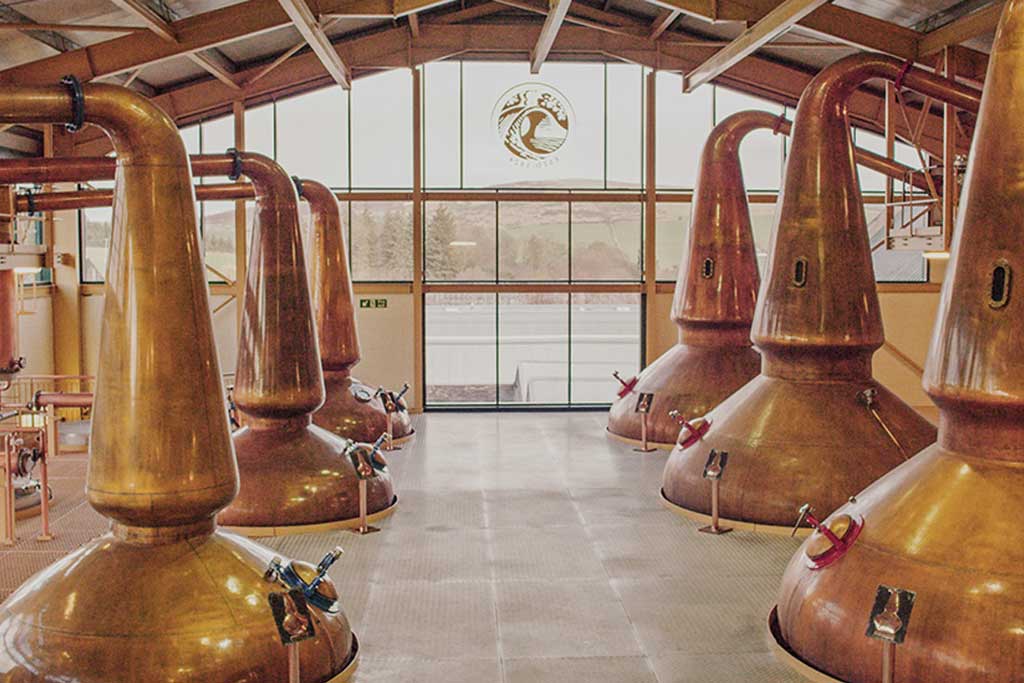
And what the heck is a pot still?
A pot still is a traditional copper vessel used for distilling whisky, most strongly associated with Irish and Scottish whiskies. Characteristically, pot stills have a bulbous base with a tapering long upper-neck. Fermented (alcoholic) whisky ‘wash’ is boiled in the bottom of the still, which vapourises upwards and exits out the still-neck before recondensing into stronger alcohol.
The size, shape and height of pot stills can vary widely. These variables dictate what is known as ‘reflux’ and ‘copper contact’ which is a fancy way of describing how alcoholic vapour recurringly evaporates and then re-condenses within the still. Depending on the design and set-up of the still, the final distillate can be light, heavy, oily or even spicy in nature.
Compared to the column distillation method (mentioned further below) pot stills retain more flavour within the final spirit. This is becuase they’re less efficient at stripping out esters and produce a comparatively lower strength distillate, ranging between 60-80% ABV.
For making single malt whiskies, pot still’s ‘inefficiency’ is preferable for retaining flavour from the malted barley and imposing the craft of the distillery – otherwise known as distillery character or distillery style.
What is the difference between whisky and single malt whisky?
‘Whisky’ is an collective term for many types of whisky whilst ‘single malt’ is a sub-type of whisky made by a single distillery using only malted barley. On its own, the word ‘whisky’ could mean any of the following sub-types listed below;
- Single malt Scotch whisky (This article)
- Single grain Scotch whisky
- Blended malt Scotch whisky
- Blended grain Scotch whisky
- Blended Scotch whisky
- Cask finished Scotch whisky
- Cask strength Scotch whisky
Why is single malt more expensive?
Single malt whisky is often more expensive than blended Scotch due to the various differences in how each type of spirit is made. This price difference isn’t a measure of quality but is more a result of;
- Ingredient costs
- Production methods
- Maturation times
Blended whisky typically contains multiple whiskies from multiple distilleries, using a mixture of grain whiskies and single malts of varying ages within its blend.
1.) Grain whiskies are made from cereal grains (other than malted barley) which are generally cheaper to use. These could be wheat, rye, corn, oats or un-malted barley and don’t require malting prior to distillation. However, malted barley must first be malted to make single malt whisky thus increasing the price of single malt whiskies.
Malting is the process of ‘fooling’ a cereal grain into germination via steeping in water, letting it grow and then halting it’s growth via heating (kilning). This process adds additional cost to malted barley compared to un-malted cereals.
2.) Grain whiskies are also less costly to distil as they’re typically made using column stills which operate continuously to produce new make spirit. Single malts can only be made using traditional pot stills which operate on a batch-basis with a much slower output, more manual labour and smaller yields. In terms of production, grain whiskies (within blended whiskies) are simply more economical to produce and reduce the overall price of blended Scotch.
3.) Lastly, single malt whiskies are generally aged longer than grain whiskies in order to maximise the colour, aroma and intricate flavours which develop within the cask. Although the minimum ageing period is three years (and one day), single malts are often aged for longer which incurs lengthier dunnage (storage) and therefore costs.
As grain whiskies are predominantly made for blended whisky, they act as an cheaper, yet flavoursome ‘filler’ within Scotch blends. Master blenders can intricately combine flavours from both single malt and grain whiskies to compliment and contrast one another for a wonderfully tasty (and sometimes cheaper) blend.
Are single malts better than blended?
Single malts are no better or worse than blended whiskies. Both have their merits, nuances and characteristics which depend on factors such as brand, age, the distillery/(ies) and your personal taste. There are some equally exceptional single malts as well as blends which – either of which shouldn’t be compared as they’re simply made in different ways.
Subjectively speaking, single malts tend to have a higher value perception amidst the mass market. They conjure a more romantic and ‘purist’ notion as they’re made by a single distillery, rather than blends which mix multiple whiskies from multiple distilleries.
If you’re choosing between single malts and blends, it’s easy to be misled by snobbery and retail prices. Single malts are generally more expensive due to the more costly production methods involved. Grain whiskies (used in blends) are much cheaper to distil which typically reduces the overall price of a blend.
Comparing single malts to blends is like comparing apples and bananas. Despite sharing the title of whisk, they aren’t the same. This is why your whisky purchases should be led by your personal tastes, rather than what’s deemed ‘better’.
If you prefer a particular blend over a single malt, that’s what you prefer. But with so many whiskies to try, you may gather multiple favourites between both categories of whisky. This is the fun of exploring different styles, regions and categories of the uisge beatha (water of life).
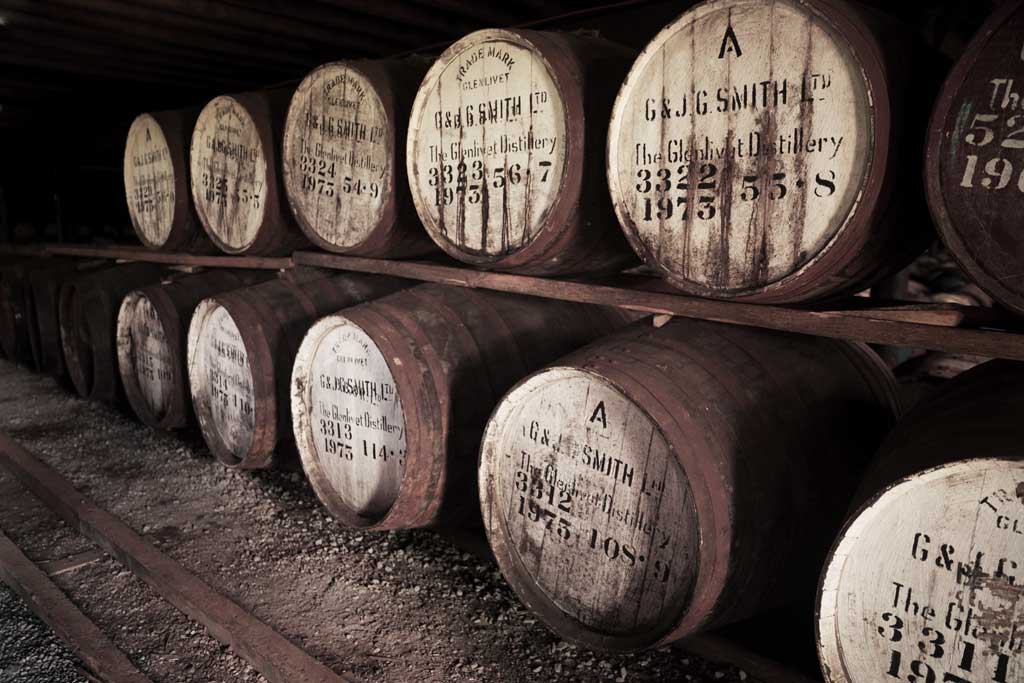
A lesser known truth about single malt whisky
As you now know, single malt whisky can only come from a single distillery. (A term usually associated with Scotch whisky.) This means it cannot be blended with other whiskies from other distilleries.
But single malts can be mixed with other single malts from the same distillery.
Oh yes. It’s a common belief that single malts only come from a single cask which has been aged for anywhere between 3, 10, 15 years or more. But the reality is that single malts are regularly mixed with other whiskies from other casks after ageing.
This isn’t blending. This is marrying.
Marrying allows distilleries to achieve production consistency in a number of ways. Firstly, the natural colour of the whisky can vary vastly due to cask maturation. No two vessels are the same, therefore the whisky being aged inside may be much darker or lighter than the same-age whisky from another cask.
By mixing whiskies from multiple casks, colour variance can be minimised. This way, your favourite single malt ‘looks the same as it always does’ when it’s on your shelf. (Especially if it’s inside a clear glass bottle.) This is why E150A caramel colouring is used by certain distilleries in their single malts to get the colour they’re looking for, even though the taste is spot-on.
Marrying also allows distilleries to achieve flavour consistency in their single malts. Again, this is largely influenced by how the whisky has aged inside the cask. Just like colour, the flavour can vary vastly between casks which would mean your favourite dram could be more malty in one bottle and sweeter in the next.
To compensate, master distillers marry various single malts from different casks and of various ages to achieve the flavour they’re looking for. For example a 10 year old single malt may be mixed with other 10 year olds and maybe some older ones too.
But this isn’t a sneaky way to sell you younger whisky.
No funny business or questions asked- if you buy a 12 year old single malt, the youngest possible whisky in that bottle is a 12 year old single malt whisky. If older single malts are married in there, they don’t influence the declared age statement on the bottle.
For NAS (no age statement) single malt whiskies, you can assume the average age of the married whiskies is no less than 3 years old. This is becuase all Scotch whisky much be aged for a minimum of three years. That being said, it’s common for distilleries who make NAS whiskies to marry very young single malts with more mature ones. This helps balance the flavour between young and old. Talisker Skye and Talisker Storm are good examples of this.
The same principle applies to blends. The youngest whisky is a blended Scotch is what determines the age statement. Of all the 29 whiskies that make Johnnie Walker Black Label, the youngest whisky in the blend is 12 years old. You can assume the other 28 whiskies are the same age or indeed older.
So single malts don’t come from a single cask then?
No, they only come from a single distillery but can be mixed with multiple single malts from that same distillery. This is what differentiates single malts from single cask whiskies which, as the name suggests, only come from a single cask. This much rarer type of whisky is considered the truest essence of a distillery which demonstrates exceptional characteristics of colour, aroma and flavour.
Amongst a distillery’s dunnage (storage warehouse), very few casks meet the criteria to be selected for bottling as a single cask whisky. This is where a master distiller carefully samples selected casks to determine whether its particular whisky demonstrates the right intricacies to become a single malt, single cask edition. No mean feat, considering how wildly different the ageing process can be inside those wooden staves!
Why do people prefer single malt?
A drinker’s preference for single malt is largely driven by a particular distillery’s style, in terms of taste and flavour profile. Single malt whiskies vary vastly, depending on factors such as region, the malted barley used, distillery character, age and cask type.
Not all single malts are created the same. A person may favour single malts from certain distilleries but steer well-clear of others. For example, a light sweet single malt from Speyside (Scotland) is a wildly different experience to a peaty single malt from the western isle of Islay.
For those who like to dig deeper into their whisky, blends are less easily investigated. It’s uncommon to know exactly where every whisky comes from within a blend, which for some enthusiasts, can be off-putting and a little ‘commercial’.
Accounting for as much as 90% of the Scottish whisky industry output, bottles of blends rarely state where each single malt and grain whisky was made. This is where the allure of provenance gives single malts their ‘purer’ value perception compared to blends.
That being said, there are some truly wonderful blends that use some exceptional single malts in their mixture. Possibly the most well known is Johnnie Walker Black Label which comprises of over 29 different whiskies from all over Scotland.
Another fine (but far less extensive) blended malt whisky is Monkey Shoulder. This wonderful whisky comprises of just just three single malts from Speyside including; Balvenie, Glenfiddich and Kininvie. These are signified by the three brass monkeys emblazoned on each bottle.
What is the best malt to buy?
The best single malt whisky to buy depends on your taste and budget. For a sweeter, lighter dram, it’s perhaps best you stick to Speyside or Lowland whiskies for their typically light and fruity characteristics.
For something more boisterous, you may want to try some peated whiskies from the isle of Islay. These smoky, salty and earthy tasting whiskies are as divisive as they are pungent in taste. For a deeper dive into the best single malts to buy, check out our list below.
9 best single malt whiskies to try
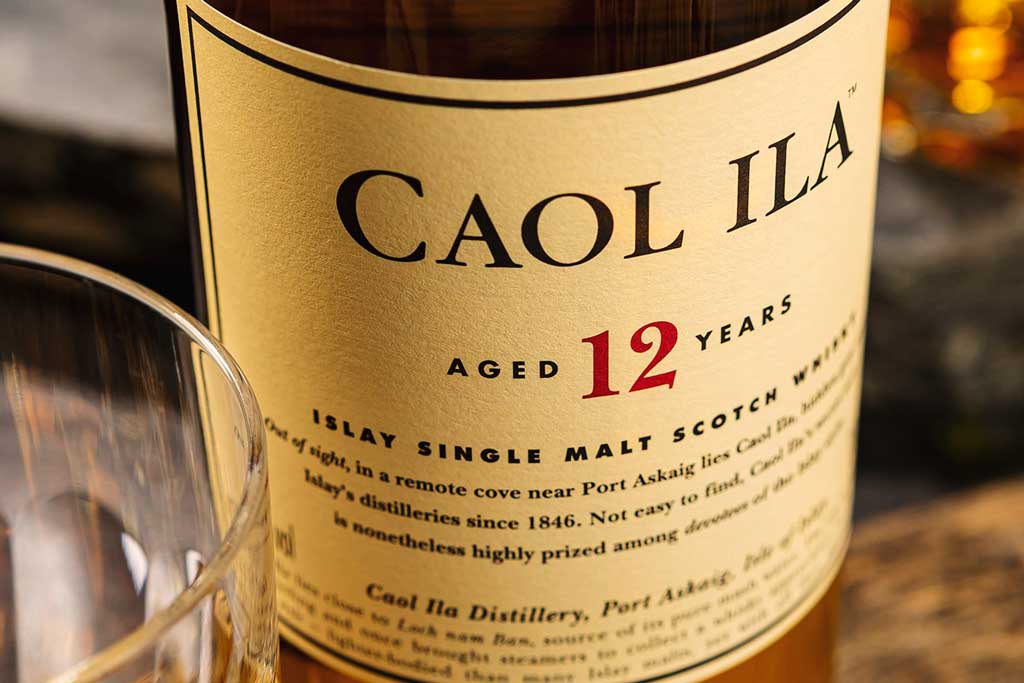
Caol Ila 12 Year Old Whisky
A wonderful single malt whisky from the renowned Scottish island of Islay, a region renowned for its smoky and peaty whiskies. This 12-year-old expression of Caol Ila has been aged in oak casks for at least 12 years, taking on the wonderful characteristics of the Islay terrioir. On the nose, Caol Ila 12 year old releases aromas of sweet and smoky peat, with subtle notes of fruit, vanilla and an underlying maritime brininess. The palate is full-bodied and intense, combining smokey notes with hints of tar and leather. There are also subtle undertones of fruity sweetness that complement the intense smokiness. Caol Ila 12 Year Old Whisky offers an incredible range of flavours and aromas that make it one of the premier single malt whiskies available from Islay, Scotland.
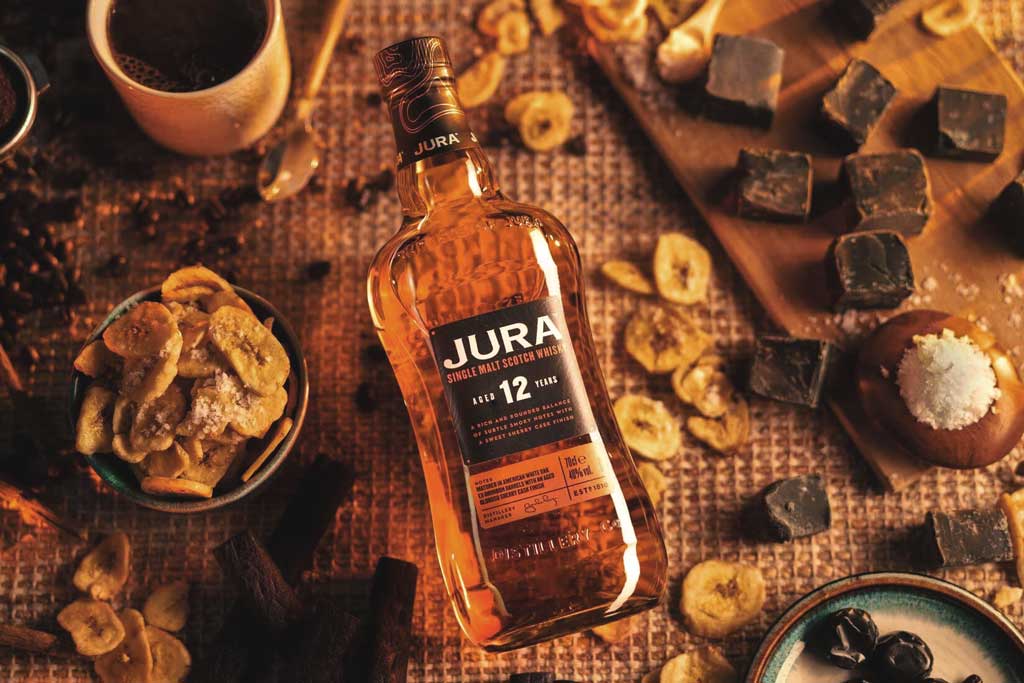
Jura 12 Year Old Whisky
An exquisite single malt, distilled on the Inner Hebridean island of Jura in Scotland. This whisky is aged in American white oak ex-Bourbon barrels, followed by a finishing period in Oloroso sherry casks. Resultantly, the nose has a fruity and nutty aroma with notes of white wine and cinnamon. On the palate, you can taste the chocolate fudge, ripe pears, and subtle peppery malt. The finish is long-lingering and smooth. The ideal after-dinner dram which is light, sweet and fruity.
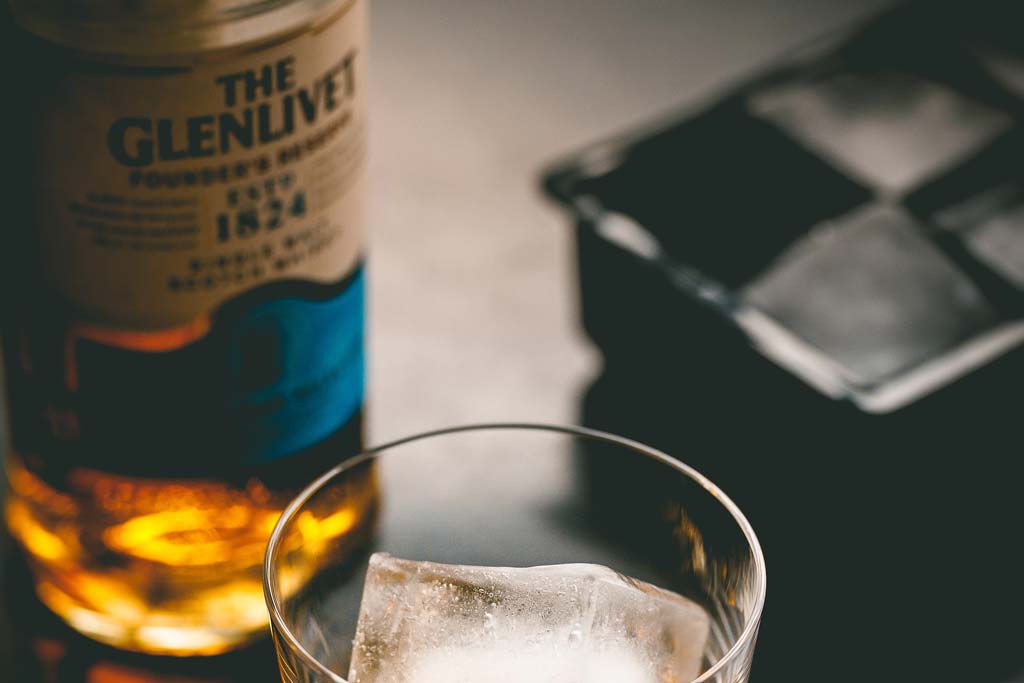
The Glenlivet 12 Year Old Whisky
A sensationally popular single malt from the coveted Speyside region of Scotland. It is aged for twelve years in both European and ex-American bourbon oak casks. On the nose, this whisky is bursting with aromas of apricot, pineapple, greengages, citrus blossom and toasted teacake. On the palate these floral flavours deepen with additional notes of buttery vanilla that mingle perfectly with all the bright fruit from the nose. This smooth and creamy whisky has a long finish with an exquisite layer of spice that lingers on the tongue. A tremendous example of a Speyside Scotch you’ve got to try!
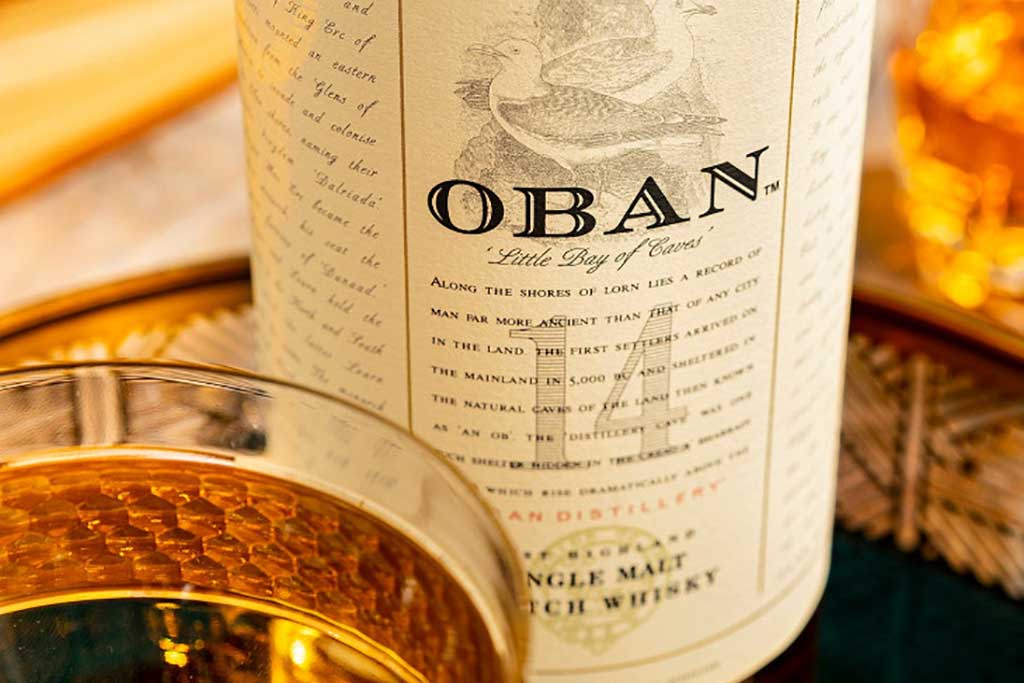
Oban 14 Year Old Whisky
Nestled is what was once a small fishing town on the west coast of Scotland, the Oban distillery is now surrounded by a now bustling seaside resort. This 14 Year Old single malt whisky is a classic Scotch that has been produced in the same traditional manner for over two centuries. In this bottle, you’ll experience notes of dried fruit, sweet honeycomb, sea salt, and oaky spice along with a hint of peaty smoke on the finish. The flavourful taste of this Scotch makes it an ideal choice for sipping neat beside the fire on cold nights in.
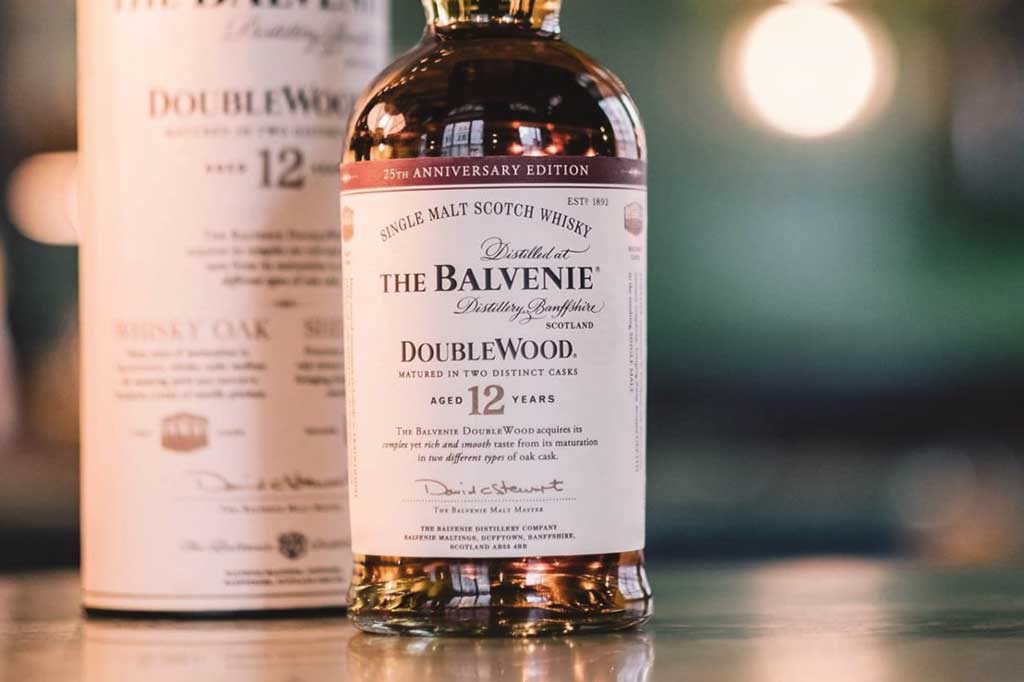
Balvenie DoubleWood 12 Year Old Whisky
This award-winning Scotch can convert even non-whisky enthusiasts with its bountiful deliciousness. Aged in both refill American oak casks and first fill European Oloroso sherry butts for nine months, the Balvenie Doublewood 12 year old single malt whisky is a delight to behold! On the nose it presents itself with notes of gristy nuttiness intertwined with spices and honeyed sultanas and grapes. On the palate you will find sweet body accompanied by bourbon characters such as vanilla and gentle spice alongside peat that lingers quietly in the background. The finish is spicy yet still sweet with a slight dryness to it. A whisky most certainly worth trying, especially if you’re new to single malt Scotch.
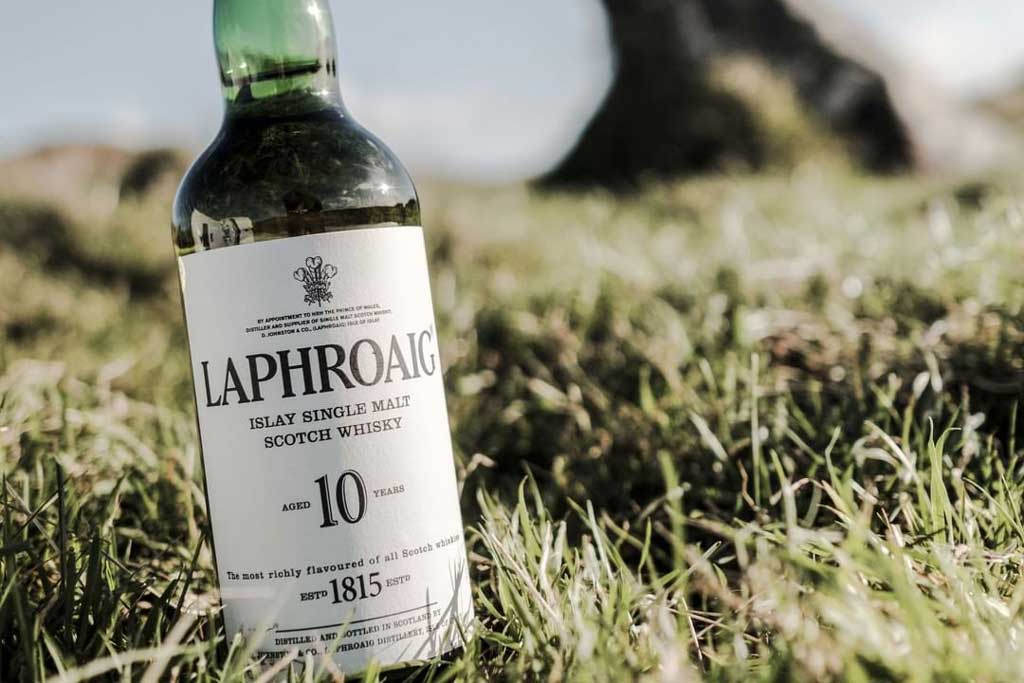
Laphroaig 10 Year Old Whisky
A divisive but widely loved single malt whisky from the famed isle of Islay, Scotland. Laphroaig 10 Year Old is matured in ex-bourbon barrels for at least ten years and is renowned for its intensely rich, smoky, iodine flavour. On the nose, you can detect strong peat notes as well as spices and liquorice. The palate brings out seaweed flavours with vanilla ice cream undertones while cardamom, black pepper and chilli add warmth to this whisky’s experience. A big and drying finish lingers with tarry notes accompanied by an iodine complexity that further adds to the tasting journey. Love it or hate it, this is marmite whisky with mass appeal from Islay fans around the world.
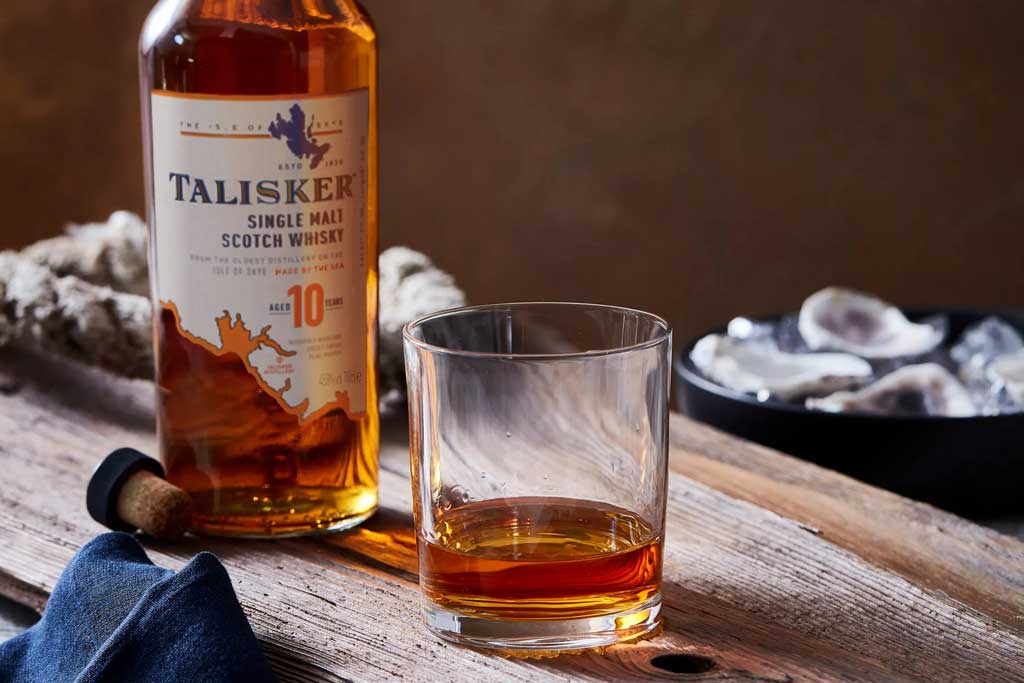
Talisker 10 Year Old Whisky
Possibly one of the best 10 year old single malts Scotch whiskies on the market for it’s price. Talisker 10 Year Old is a classic single malt whisky from the Isle of Skye in Scotland. Aged for a minimum of ten years in American oak casks, Talisker 10yo offers thick pungent smoke alongside sweet pear and apple peels with subtle hints of kippers and seaweed. The palate consists of peat smoke crackling with pepper, balanced by brine and barley which yields to delicate orchard fruits as it moves onto a long finish characterized by sugary caramelized malt tones. Enjoy this spectacular after dinner dram – an immensely satisfying experience!
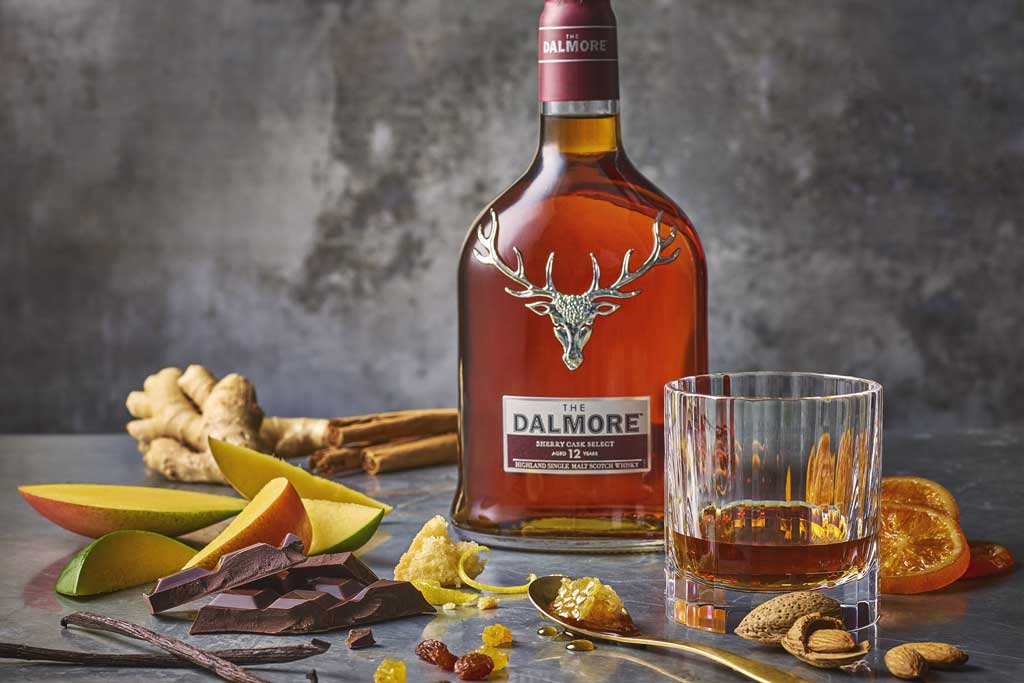
Dalmore 12 Year Old Whisky
Surprisingly rich for its age, the The Dalmore 12 Year Old single malt whisky is a luxurious and complex spirit from Alness, Scotland. It boasts decadently rich flavours of dark roast coffee, orange zest, buttery pastry, Seville marmalade, Triple Sec liqueur, winter spices and fruitcake provide an intense yet smooth drinking experience. On the palate you’ll find notes of cocoa and milk chocolate for an added sweetness while the finish leaves hints of oranges on your tongue. This Scotch is truly memorable and sure to be enjoyed by even the most discerning connoisseurs.
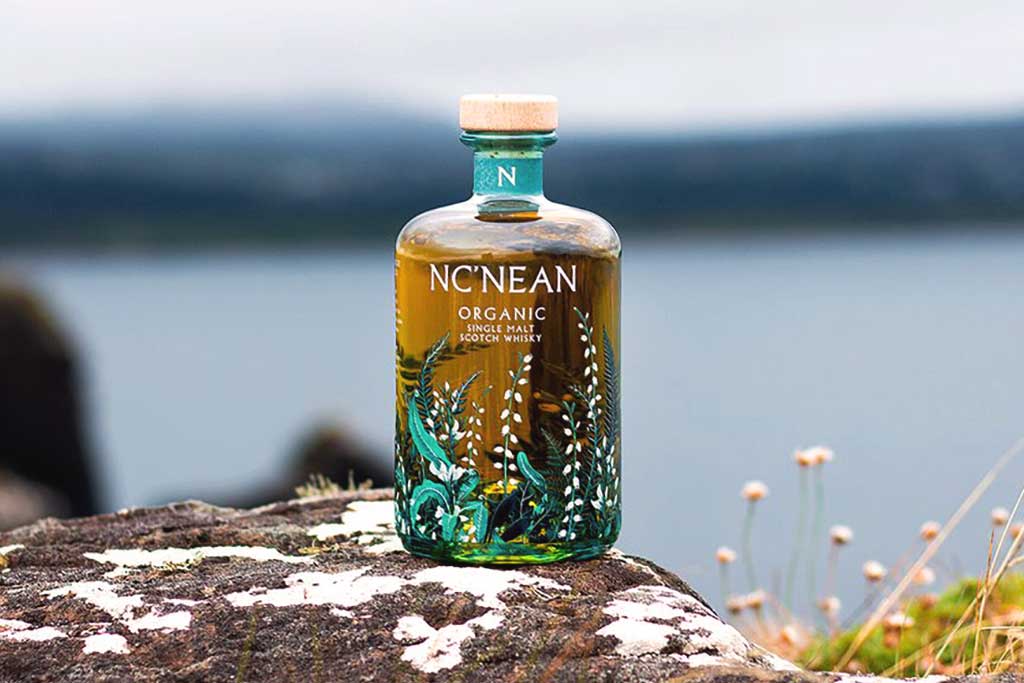
Nc’nean Organic Single Malt Whisky
A marvellous example of eco-conscious whisky making. The Nc’nean Organic Single Malt whisky is made from from organic Scottish barley, gently fermented and distilled at the carbon neutral Nc’nean distillery near Morvern, western Scotland. Interestingly, this whisky is matured in an exquisite blend of red wine and American whiskey barrels, bolstered by sherry casks to impart an impressively rich body with plenty of fruity sweetness. Its eye-catching bottle is made entirely from recycled glass, reducing its environmental footprint.
On the nose you can detect notes of barley sugar sweeties and orange oil along with apricot jam and summer berries joining in for good measure. These incredibly inviting aromas give way to tangy tropical fruits like charred pineapple on the palate as hints of ginger, fudge, honey and stewed berries come through too. The finish leaves behind pleasant aftertastes dark chocolate, candied oranges as well as buttered shortbread all underscored by oaken spice – it’s truly delightful!
What is single malt whisky? FAQs
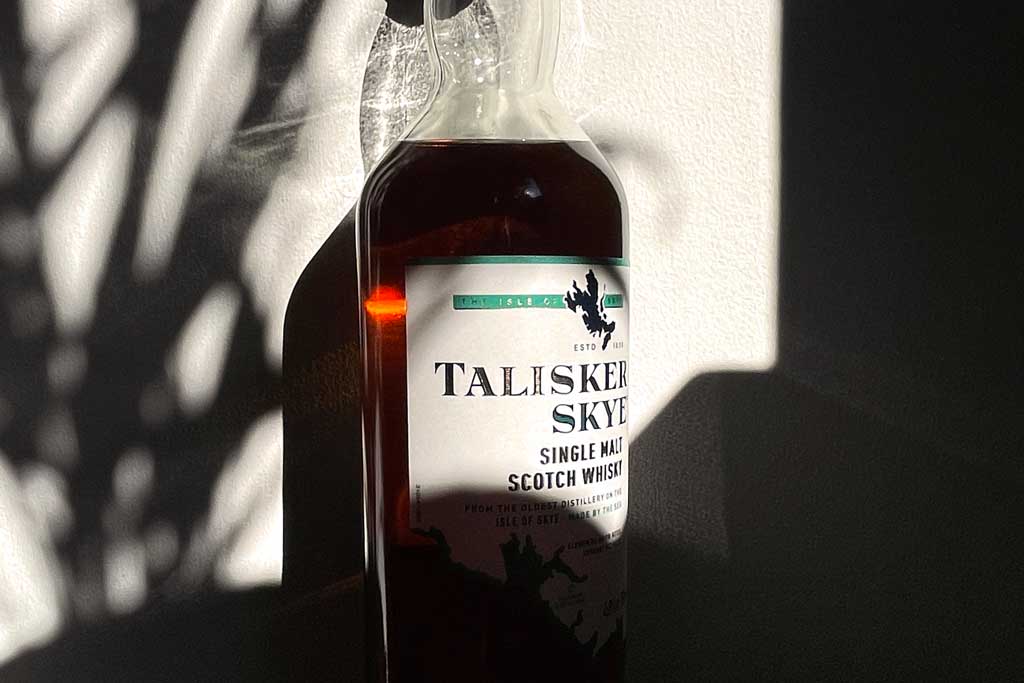
What is the difference between Scotch and single malt?
‘Scotch’ is simply an collective term for whisky made in Scotland. Meanwhile ‘single malt’ is a sub-type of Scotch which has been made by a single Scottish distillery using only malted barley. There are many types of Scotch whisky which you can read more about here.
What is the difference between single malt and double malt whisky?
Single malt whisky is made by a single distillery using only malted barley. However the term ‘double malt’ isn’t an officially defined whisky term – therefore, it may be used to describe whiskies which are blended from grain whiskies, multiple single malts or both.
What is the difference between single malt and pure malt?
Single malt whisky is made by a single distillery using only malted barley. However ‘pure malt’ describes whisky made from blended single malts from multiple distilleries. As a phrase, pure malt isn’t particularly common in Scotland and was previously called ‘vatted malt’ until it became known as blended malt whisky. However, Japanese distilleries may sometimes use the ‘pure malt’ term for blended malt whisky.
What’s the difference between whiskey and Scotch?
Usually, whiskey comes from either Ireland or America whereas Scotch can only be made in Scotland. The easiest way to tell the difference is by their spelling; whisk(e)y or whisky. Canadian and Japanese also use the Scottish spelling of whisky.
What are the 5 types of scotch?
- Single malt Scotch whisky (This article)
- Single grain Scotch whisky
- Blended malt Scotch whisky
- Blended grain Scotch whisky
- Blended Scotch whisky
Is Johnnie Walker a blend or single malt whisky?
Johnnie Walker primarily make blended Scotch and do not make any single malt whiskies. The only exception to their blended range is their Green Label bottle which is a blended malt Scotch – made entirely of an estimated 27 single malts which excludes any grain whiskies.
Is Black Label a single malt?
Johnnie Walker is a blended Scotch whisky. It’s made up of over 29 different whiskies (both grain whiskies and single malts) from all over Scotland. The Black Label blend was first released in 1909 by John ‘Johnnie’ Walker and his son Alexander, who wanted to create a whisky that was “created to represent the very best from all four corners of Scotland”. As one of their best selling blends, it remains as popular today as it was back then.
Is Red Label a single malt?
No, Johnnie Walker Red Label is a blended Scotch whisky. This word-famous blend consists of over 35 different whiskies from all over Scotland (both grain and single malts) which are carefully blended together to create the final product. This is why you’ll find subtle notes of smoke, sweetness and spice in each sip.
Is Glenfiddich a single malt?
Yes, Glenfiddich is a single malt Scotch whisky. It’s one of the most famous Speyside Malts, and has been distilled at the Glenfiddich Distillery since 1886. Its light and fruity character is due to it being aged for a minimum of 12 years in American Oak casks, which adds notes of sweet vanilla and spicy oak into the final product.
Is Jack Daniel’s a single malt?
No, Jack Daniel’s is not a single malt whisky. It’s an American Whiskey which falls into the category of Tennessee whiskey which is made using a unique process known as the Lincoln County Process. The new make spirit is filtered through 10 feet of sugar maple charcoal before being aged in oak barrels for up to 4 years. This gives Jack Daniel’s its distinct smoky sweetness and subtle notes of caramel and vanilla.
Is Jameson a single malt?
No, Jameson is a blended Irish whiskey and not a single malt. It’s made at the Midleton distillery in county Cork (Ireland) from a blend of triple distilled pot still whiskey and column distilled grain whiskey made from Spanish maize (corn) from northern Spain.


